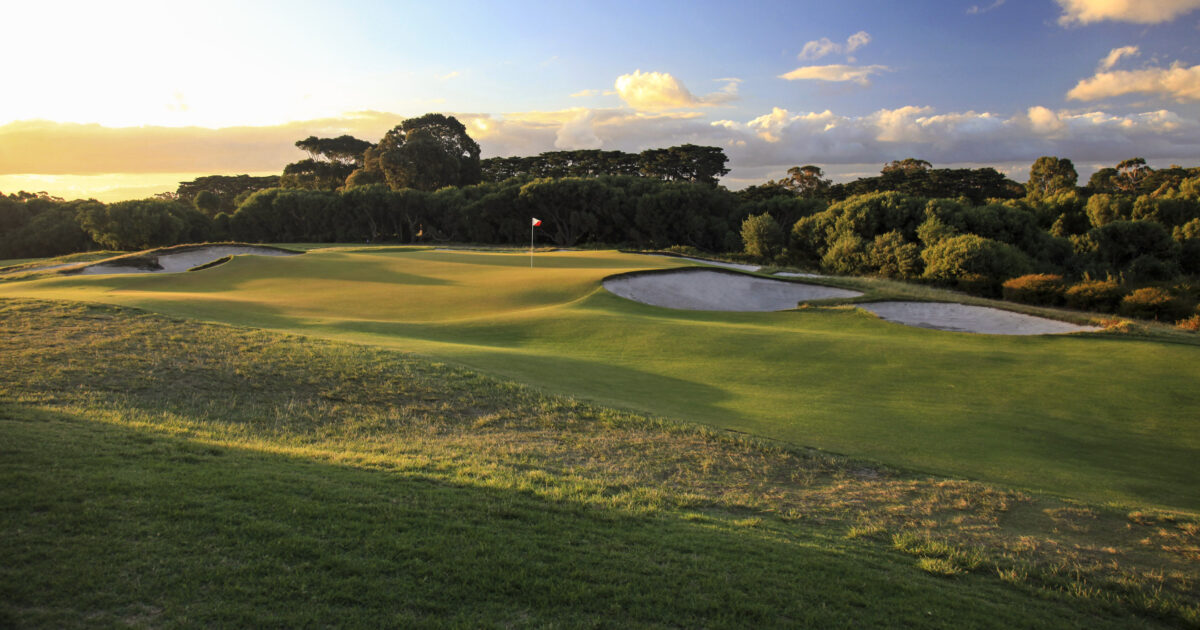I had the typical American checklist of expectations as I boarded the massive Qantas A380 en route to Australia: koala bears, kangaroos, surf breaks and cool accents.
I was headed to Melbourne in the state of Victoria on the country’s southern coast, so I was out of luck when it came to crocs – the fierce biters that live far to the north, not the shoes worn by several jammie-clad passengers on my overnight flight. But there would be plenty of nature on tap during Golfweek‘s visit to the second largest city in Oz and its surrounds.
[mm-video type=video id=01h0r4h0a300q04kcrqr playlist_id=none player_id=none image=https://images2.minutemediacdn.com/image/upload/video/thumbnail/mmplus/01h0r4h0a300q04kcrqr/01h0r4h0a300q04kcrqr-9dbf732039aec1442023545c0f6d4803.jpg]
I also had plenty of expectations for Victoria’s golf just south of Melbourne. The Sandbelt region is famous among fans of course architecture, for good reason. Royal Melbourne, Kingston Heath, Victoria Golf Club and a handful of others pepper the lists of best classic courses around the world, including those compiled by Golfweek’s Best ranking program.
I knew this late-April trip to Australia would be full of big bounces, putts from off the greens, beautiful bunkers and some of the most intoxicating greens in the game. The inland equivalent of links golf would be a fair description, with firm and fast sand-based layouts that force a player to think instead of just fire away at a distant flagstick. In other words, my favorite kind of golf.

My hopes, based on years of reading and studying photography and watching elite international events broadcast from Australia, were high. Scotland, Ireland, England, even a handful of U.S. resorts that successfully mimic the best of links golf – this is the style of play I wanted to experience in Victoria.
With expectations so impossibly high, I was gobsmacked when Australia surpassed all of them. Every box was ticked. Simply put, Victoria serves up the best kind of golf at dozens of courses, nine of which I sampled.
The terrain, the textures, the turf – it all rolled into a level of golfing perfection on frequent repeat. I was on the ground nine full days, playing golf for six of them, and it wasn’t nearly enough time to take it all in. But the courses I did play in mostly sunny conditions and ideal autumn breezes – remember, spring in the northern hemisphere is fall to those south of the equator – ignited a desire to return. The flight is long, that much is true. But the list of courses I want to replay or tackle for a first time is even longer.
Much of this is credited to one man who put the Sandbelt on golf’s map in a big way. Alister MacKenzie – a Scot famed in America for his later course designs at Augusta National Golf Club in Georgia and Cypress Point in California, among others – visited Victoria in 1926 and laid out the West Course at Royal Melbourne, which ranks among the top 10 in the world on most critics’ lists of courses. He also lent his services to several other clubs in the region, be that rebunkering an existing course or suggesting changes to putting surfaces. MacKenzie’s fingerprints are almost everywhere in the sand.

Golf already existed around Melbourne, but it was Royal Melbourne’s West Course that proved elite golf could flourish in the Sandbelt. Other prominent designers have followed in MacKenzie’s footsteps, and in the nearly 100 years since his visit, the region has become a mecca for international golf architecture aficionados who heed the call, walk down a jetway in some faraway land and jet off to Melbourne to discover what all the fuss is about. Count this region alongside the United Kingdom and Ireland as must-sees for anybody who truly loves great golf courses.
I was in Victoria with a film crew and Golfweek contributor Averee Dovsek, a former college golfer and now a long-drive competitor who also makes fitness and instructional videos for Golfweek.com. With the government agency of Visit Victoria as our host, Dovsek and I were to play a series of matches against local golf pros and club members on several of the area’s top courses. Then I was scheduled to play several other courses on my own – when it comes to this kind of golf, I can’t get enough. Australia is a long way for an American to travel for golf, so when you’re there you have to take advantage of every possible chance to play. VisitMelbourne.com is a great place to start, as is TheSandbelt.com.

